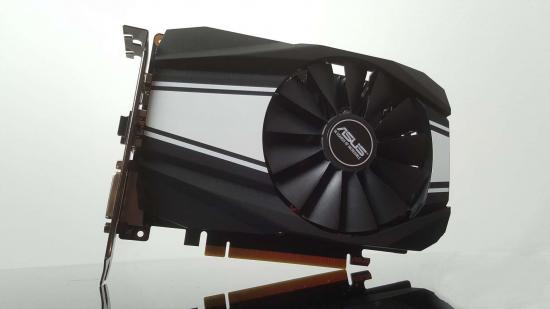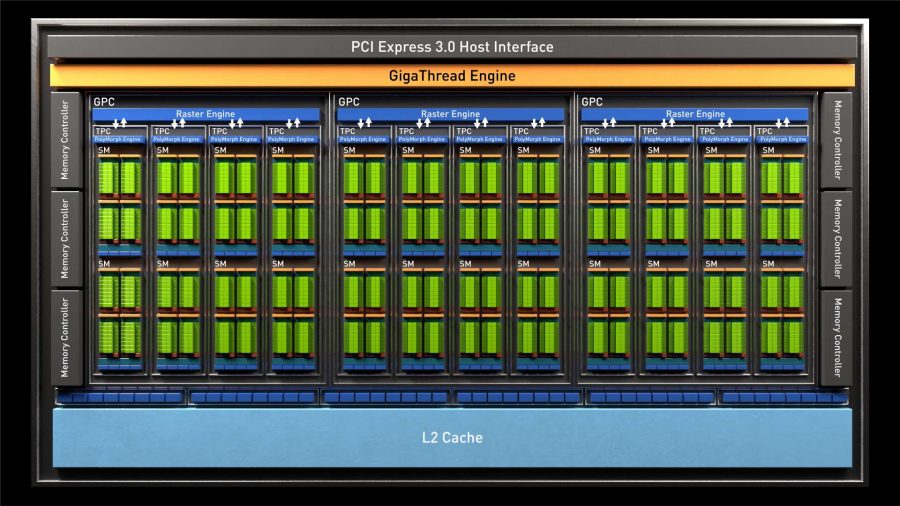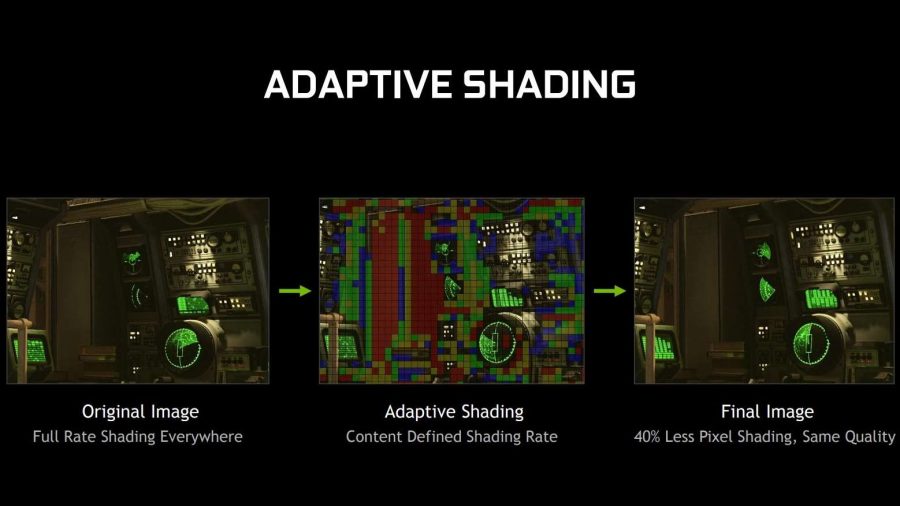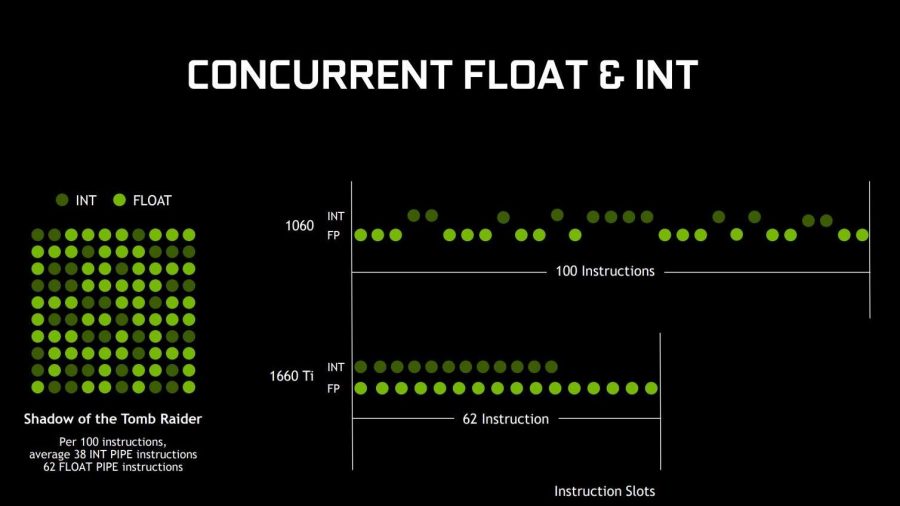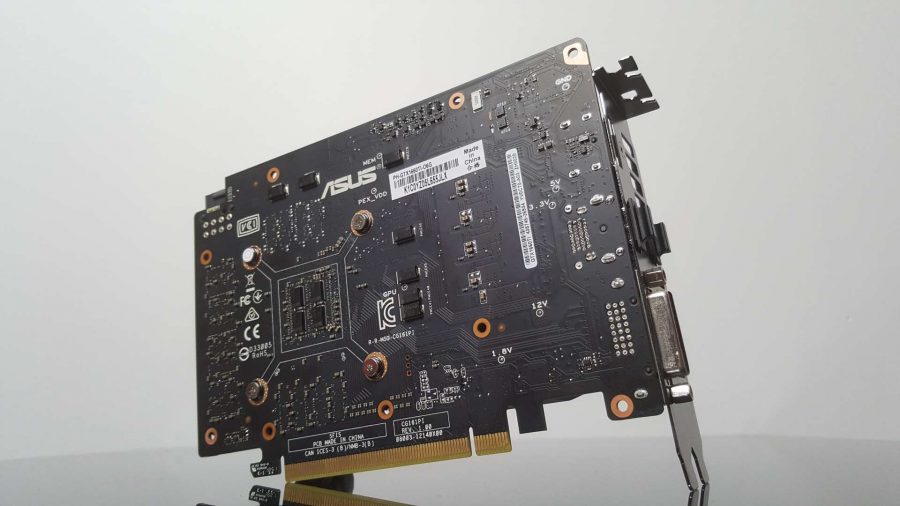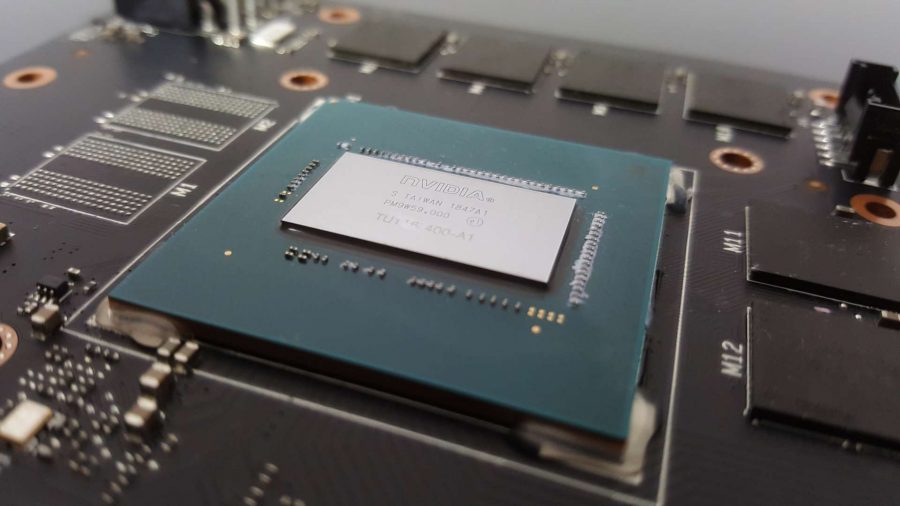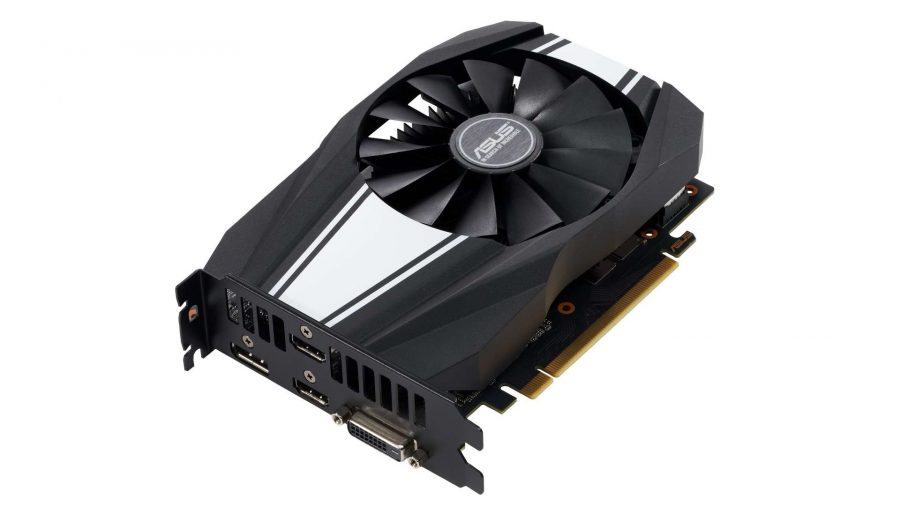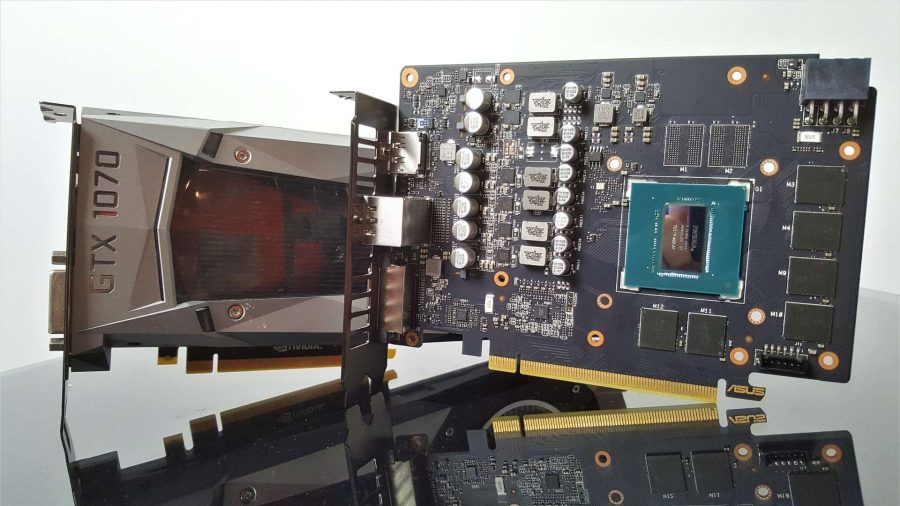Our Verdict
It's now facing competition from the GTX 1660 Super, but the original Asus Phoenix GTX 1660 Ti showed the strength of Nvidia’s GTX 1660 Ti, beating the RX 590 for only slightly more cash. And while the diminutive cooler makes it great for a mini-ITX build, it does still hold that new Turing GPU back a little.
The Nvidia GTX 1660 Ti was the worst kept secret in PC hardware and I honestly think the introduction of a 16-series is one of the weirder choices Nviida has made this year. But it’s also the fastest sub-$300 graphics card around… so long as you go for one of the MSRP versions and not the inexplicably expensive overclocked cards. Unfortunately the recently released GTX 1660 Super has stolen its thunder, practically matching its gaming performance for a good $50 less.
The Phoenix OC and ROG STRIX GTX 1660 Ti cards from Asus are the perfect examples; the miniature card offers GTX 1070 performance for GTX 1060 money, while the STRIX is grinding up against the far superior RTX 2060 like some nightclub sex pest.
So yes, the 16-series has launched, we’ve even now got a non-Ti Nvidia GTX 1660 card too, and the GTX 1650 is there lower down the stack with its own GTX 1650 Super variant coming soon too. After the 20-series. With the GTX prefix instead of RTX. With this being the first in a new range of GeForce graphics cards it’s hard not to feel a little like GPU technology is in retrograde.
After the lukewarm reception the 20-series graphics cards received for their introduction of real-time ray tracing and AI-assisted imagery, it’s not surprising to see the mainstream Turing chips stepping backwards in terms of next-gen tech.
But that’s not to say these Turing GPUs aren’t without their graphics enhancements over the last-gen Pascal graphics cards. You may be losing the RT and Tensor Cores, but there is still enough in the new 16-series silicon to give your games a genuine performance boost.
The costly ray tracing and AI tech made the RTX GPUs both massive and expensive. And without enough standard rendering support in the mainstream chips necessary to make the most of them, both next-gen features have been nixed to make the GTX Turing cards affordable.
Screen queens: The best gaming monitors for your new GPU
That all makes complete sense, and the switch from RTX to GTX in the latest Turing nomenclature is all we really needed to denote the lack of its dedicated silicon. Nvidia obviously thinks us simple folk who would not understand that a GTX 2050 would be different to an RTX 2060, though, because it has decided to create the 16-series.
And why call it the 16-series? Well, according to Nvidia it’s “because it really is closer to the 20-series than it is to the 10-series, so that’s what the ‘16’ is meant to convey.”
Riiiiiight.
Nvidia GTX 1660 Ti specs
The new GTX 1660 Ti uses a completely fresh Turing GPU, but one specifically created for pure rasterised rendering performance, and not for the burgeoning world of real-time ray traced effects that Nvidia has been pushing with the 20-series GPUs. As I said, the TU116 GPU at the heart of the GTX 1660 Ti comes without the luxuries of the RT and Tensor Cores of its larger, more expensive siblings.
That’s a smart play in the mainstream segment, where price is king and you need to get the maximum standard performance out of your silicon without wasting die space on extraneous effects that won’t run smoothly on a lower-end GPU anyways.
| GTX 1660 Ti | RTX 2060 | GTX 1060 | |
| GPU | TU116 | TU106 | GP106 |
| Lithography | 12nm FinFET | 12nm FinFET | 16nm FinFET |
| CUDA cores | 1,536 | 1,920 | 1,280 |
| Memory | 6GB GDDR6 | 6GB GDDR6 | 6GB GDDR5 |
| Memory bus | 192-bit | 192-bit | 192-bit |
| Memory speed | 12Gbps | 14Gbps | 8Gbps |
| Transistors | 6.6bn | 10.8bn | 4.4bn |
| Die size | 284mm2 | 445mm2 | 200mm2 |
| Reference MSRP | $279 | $349 | $249 |
There are 1,536 CUDA cores in the new TU116 GPU, still based on the current 12nm FinFET technology Nvidia has been using for all its other Turing-based GPUs. The reference clock of the GTX 1660 Ti is rated at 1,500MHz base and 1,770MHz boost, but the mildly overclocked Asus Phoenix version we’ve been testing comes in at 1,785MHz and runs happily at over 1,800MHz throughout our testing.
The far more expensive STRIX version, however, sits pretty at 1,950MHz thanks to its hefty cooling, despite having the same rated clock speeds.
The GTX 1660 Ti also comes with the same GDDR6 memory the Turing generation of graphics cards introduced. To begin with it looks like there will be 6GB of GDDR6 in place, but there have been reports of GTX 1660 Ti cards with 3GB GDDR6 registered with the EEC. About the potential existence of 3GB 1660 Ti cards, however, Nvidia has said to us: “that’s not true. The 1660 Ti will be 6GB GDDR6, and that’s the only option for this product.”
The emphasis there being on the ‘Ti’ part, so it’s very possible the rumoured GTX 1660 and GTX 1650 will ship with different memory configurations.
Because of all the extra RTX gubbins pulled out of this latest Turing GPU it’s far smaller – some 57% – than the next rung on the ladder, the RTX 2060. It is though some 42% larger than the GTX 1060 chip it’s ostensibly replacing.
But, while the RT and Tensor Cores are (probably) gone, Nvidia is still going to be offering all the new features it introduced in the latest generation of GPU outside of the ray tracing and AI-based silicon. Nvidia has added dedicated silicon into the SM to process FP16 operations, the sort of tasks normally dealt with by the Tensor Cores, so it’s not impossible to think the GTX 1660 Ti might one day have access to something similar to the DLSS feature enabled on the big boy Turing GPUs. The Tensor Cores, after all, are effectively just mixed-precision FP16/FP32 cores optimised for deep learning tasks.
With essentially the same Turing shaders in place that means the TU116 will still utilise concurrent execution of floating point and integer operations – where the Pascal architecture has to park one to carry out the other – and will offer support for the motion and content adaptive shading features too.
Modern game engines are the ones which will benefit the most from these changes as more and more integer operations are being requested of today’s graphics silicon.
The example given is of Shadow of the Tomb Raider, where for every 100 operations the GPU has to take on 38 are integer based and 62 are standard floating point instructions. On the GTX 1060 its GPU would have to go through those 100 operations in sequence, while the Turing chip inside the GTX 1660 Ti is able to run those at the same time.
In effect where the GTX 1060 is running 100 instructions the GTX 1660 Ti only needs to run 62. That’s quite a saving and is part of the reason the Turing shaders offer more performance than their Pascal forebears.
The GTX 1660 Ti’s TU116 chip also retains the same unified cache architecture used by the rest of the family, which gives it a huge amount more throughput, and capacity, across the whole chip compared with the Pascal generation. Check out our full Nvidia Turing deep-dive for the skinny on the architecture’s core features.
Nvidia GTX 1660 Ti benchmarks
Nvidia GTX 1660 Ti performance
The gaming performance of the GTX 1660 Ti, especially this diminutive Asus Phoenix OC edition, shows Nvidia’s latest Turing as possibly the best mainstream 1080p gaming card around right now. While you can still find the RX 580 for around $200, however, AMD does still have some call on that title for the more price-conscious crowd.
For the most part this GTX 1660 Ti ties with the GTX 1070, and in some cases, such as with Assassin’s Creed Odyssey, it even surpasses the more expensive Pascal card. And with the overclocked, super-cool STRIX the times where the GTX 1660 Ti GPU outpaces the 1070 occur even more often. Though you do have to pay over the odds for the privilege.
That effective parity with the GTX 1070 also means that, more often than not, the GTX 1660 Ti gives the latest Polaris GPU, the RX 590, a swift kick in the pants. It’s only the notably AMD-favouring Battlefield V benchmark where the Radeon card has some sway. We do, however, have to bring the RX Vega 56 into the conversation too considering AMD has pushed to temporarily slash the prices on select versions of that GPU to compete.
You can, right now, get MSI and Sapphire versions of the Vega 56 for around the same price as the GTX 1660 Ti. And that’s a much closer battle, with the two cards trading blows across our 1080p benchmarking suite. But the price drop won’t last for long and has just been enacted to try and spoil the Nvidia launch party.
The story is much the same at 1440p, where the GTX 1660 Ti cards show a similar level of dominance over both the Radeon RX 590 and Vega 56 GPUs. The story is less clear at 4K where the AMD cards’ higher memory capacity gives them a bit more of an edge at that demanding resolution. It’s still by no means a clean sweep for the Radeon GPUs with the Nvidia cards still able to put up an impressive showing in a good few 4K benchmarks.
Where the Asus Phoenix version of the GTX 1660 Ti does struggle, however, is when you look at the relative thermal performance. Because of the small-scale heatsink and single-fan cooler the Asus card gets hotter than any other card in our looped Metro Exodus benchmark stress test.
It also seemingly has to work a bit harder than the STRIX version to keep cool too, as the higher-clocked Asus GTX 1660 Ti consumes less power, while still being more chilled. But both show that Nvidia’s Turing GPUs retain the efficiency lead over AMD’s GPU architectures as both the Radeon cards consume far more juice from the wall during gaming loads.
Nvidia GTX 1660 Ti verdict
The GTX 1660 Ti was a great introduction to the GTX Turing generation of cards. Its mix of price and performance is exactly what was needed from Nvidia to assuage the ray tracing naysayers, gnashing their teeth about the ultra-expensive 20-series cards.
It delivers GTX 1070 performance for almost GTX 1060 pricing. Thankfully, despite the GTX 1660 Ti being a partner launch without reference cards from Nvidia, team GeForce has learned its lesson about letting the AIBs loose with high-priced overclocked cards at launch. There are a host of GTX 1660 Ti cards at the $279 (£260) MSRP and this Asus Phoenix OC is one of the sweetest. It’s maybe not the best because of the limited cooling ability of the tiny chip chiller, however.
But Nvidia has now released the GTX 1660 Super, a card that comfortably undercuts it in terms of price and barely misses a step when it comes to gaming performance. And all it took was some speedier memory to match the GTX 1660 Ti’s superior GPU configuration.
AMD has tried its best to put the silicon kitty among the sky rats by reducing the price of the RX Vega 56 just ahead of the GTX 1660 Ti launch, but it’s a bit of a temporary smokescreen at best. There are just two SKUs being given a price cut, and I’m not convinced that when the first batch is out of stock – which they are in a lot of places already – they’ll get replenished particularly quickly, or remain at that lowered price for long. AMD would have killed off the RX 590 otherwise.
Most RX Vega 56 cards are far more expensive than even the aggressively pricey STRIX GTX 1660 Ti, which effectively leaves the RX 590 as the only long term AMD card to face off against the new mainstream Turing GPU. And realistically it struggles head-to-head with the reference-priced models of the GTX 1660 Ti.
The overclocked STRIX, with its superior cooler allowing it to stick to an impressively high 1,950MHz, does post sometimes much higher frame rates than its diminutive sibling, but is also too far north of $300 to make any sense. At that price it’s knocking its head against the RTX 2060, which is a far superior card. Seriously overclocked iterations of the GTX 1660 Ti then are going to be very difficult to recommend.
But even at the standard MSRP the Asus Phoenix GTX 1660 Ti is difficult to recommend over the GTX 1660 Super. Sure, it’s objectively quicker in terms of raw frame rates, but not by enough to make the $50 price difference worthwhile.
